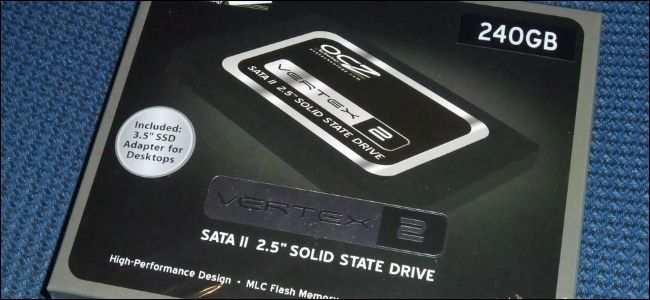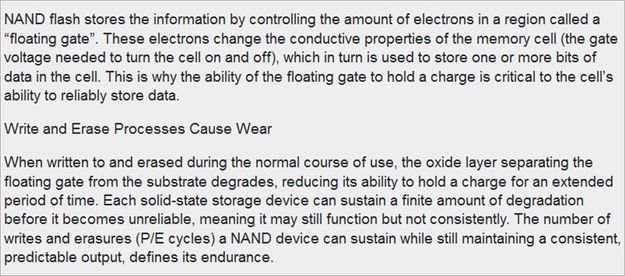Many of us have all heard the same thing, that SSDs have a limited number of writes before they go bad. Why is that? Today's SuperUser Q&A post has the answer to a curious reader's question.
Today’s Question & Answer session comes to us courtesy of SuperUser—a subdivision of Stack Exchange, a community-driven grouping of Q&A web sites.
The Question
SuperUser reader Nzall wants to know why SSD sectors have a limited number of writes:
I often see people mention that SSD sectors have a limited number of writes before they go bad, especially when compared to classic (rotating disc) hard drives where most of those fail due to mechanical failure, not sectors going bad. I am curious as to why that is.
I am looking for a technical yet consumer-oriented explanation, i.e. the exact component that fails and why frequent writes affect the quality of that component, but explained in such a way that it does not require an extreme amount of knowledge about SSDs.
Why do SSD sectors have a limited number of writes?
The Answer
SuperUser contributors Big Chris and MonkeyZeus have the answer for us. First up, Big Chris:
Copied from the article, Why Flash Wears Out and How to Make it Last Longer:
Followed by the answer from MonkeyZeus:
Imagine a piece of regular paper and a pencil. Now feel free to write and erase as many times as you please in one spot on the paper. How long does it take before you make a hole/tear in the paper? SSDs and USB flash drives follow this basic concept, but at the electron level.
Have something to add to the explanation? Sound off in the comments. Want to read more answers from other tech-savvy Stack Exchange users? Check out the full discussion thread here.
Image Credit: Yun Huang Yong (Flickr)


